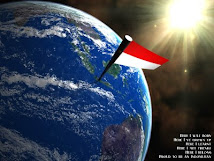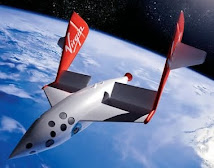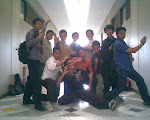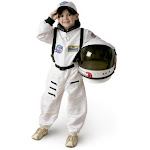Tulisan ini saya ambil dari sebuah forum bersama tulisan dari seseorang yang mengunakan nickname sharsono, yang kemudian banyak blog dan site yang memuat nya dikarenakan “artikel” tersebut tulisannya yang berbobot disampaikan dengan cerdas dan relative mudah dicerna…..
Bukan bermaksud untuk menghargai diri sendiri (budaya negeri sendiri) secara berlebihan, tetapi sudah selayaknya kita tidak kehilangan harga diri ketika kita merasa budaya kita berumur sudah sangat tua, tidak ada sama sekali untuk niatan bersombong – sombong ria tetapi untuk membangkitkan motivasi dari rasa rendah diri kita, ketika kita merasa tidak tidak mempunyai pijakan untuk berdiri sama tinggi dengan budaya yang lain.
Memang artikel tersebut cukup panjang tapi nila-nilai yang terkandung dalam artikel tersebut layak untuk dibaca dan mendapat kan nilai dari saya tooooooop markotop binti maknyuuuuus :D
…………………………………………………………………….
Asimilasi Agama dan Budaya
Perpaduan unsur agama yang terjadi dinegara kita Indonesia terutama dalam lingkungan masyarakat Jawa, sudah lazim dan tidak asing lagi, yang nalurinya sampai sekarang ini masih sering kita jumpai.
Misalnya unsur agama Hindu berpadu dengan agama Budha sehingga diantaranya terdapat sebutan Sang Hyang Siwa Budha, Naluri Jawa berpadu dengan unsure agama Hindu dan Agama Islam, misalnya soal Slametan / Kenduri dengan doa Islam. Itu semua menjadi kenyataan sejarah.
Jadi kesimpulannya bahwa para leluhur orang Indonesia sejak jaman purba sebelum bermacam-macam agama datang menggenangi pulau Jawa khususnya dan bumi Nusantara umumnya, mereka sudah mempunyai system PENYEMBAH kepada Tuhan Yang Maha Esa, yang sekarang lazim disebut dengan istilah PAWUKON.
Dengan demikian sejak jaman Purba leluhur kita pada hakekatnya sudah mengenal Tuhan, tidak seperti perkiraan dan pendapat beberapa orang jaman sekarang, bahwa pada waktu sebelum datangnya Agama Hindu dan Budha di Jawa, nenek moyang kita dikira belum mengenal Tuhan dan menyembah Roh. Menurut saya itu salah terka.
Pawukon itu tidak hanya sarana untuk menyembah Tuhan tetapi digunakan juga untuk pedoman mengetahui watak seseorang yang mirip horoscope. Oleh karena itu mungkin kita perlu mengungkap cerita tentang pengetahuan ilmu perbintangan peninggalan leluhur kita yang ada hubungannya dengan soal Pawukon.
Gule Angsa dan Kambing
Wah keliatannya mesti agak serius nih mengungkap pengetahuan ilmu perbintangan peninggalan leluhur kita yang erat hubungannya dengan Pawukon..
Dalam buku “Pustoko Rojo Purwo” gubahan Mas Ronggowarsito ada cerita lakon “WATUGUNUNG” yang mengisahkan hidupnya sejak kecil sampai menjadi raja di Negara Gilingwesi yang diuraikan sbb:
Dewi Sinto yang keluar dari dalam tanah, untuk dapat bertemu dengan Begawan Wrahaspati harus memasak daging BANYAK (Angsa) dan daging Wedhus Pedro (Domba).
Cerita tersebut sesungguhnya adalah kiasan sandi ilmu perbintangan, yaitu Wrahaspati adalah Planet Jupiter, Dewi Sinto yang keluar dari tanah melambangkan Bumi (Dunia). Banyak/Angsa adalah lambang gugusan bintang “Banyak Angrem” yaitu bintang Scorpio. Sedangkan Wedhus Pedro atau Domba adalah bintang Aries.
Bagi orang awam yang membaca ceritanya tanpa mengetahui bahasa samarannya (sandi) pasti mengira bahwa Dewi Sinto itu bener-bener harus memasak campuran daging kambing dan daging angsa untuk menemui Wrahaspati. Bikin gule buat sajen … ha ..ha
Dengan sedikit bersabar dan menggunakan nalar kita sekarang bisa melihat bahwa cerita roman tersebut sesungguhnya adalah pelajaran ilmu astrologi.
Selanjutnya dalam cerita diterangkan bahwa pertemuan Wrahaspati dengan Dewi Sinto menghasilkan anak yang namanya RADITE yaitu Matahari yang dibesarkan oleh Begawan Radi titisannya Batara Surya. Pertemuan Wrahaspati dengan Dewi Landep menghasilkan anak R.Wukir. Pertemuan Wrahaspati dengan Dewi Somo (Bulan) menghasilkan anak Anggoro (Mars), Sukro (Venus) dan Budo (Mercury).
Pertemuan Dewi Somo dengan RADITE menghasilkan anak Dewi Tumpak (Saturnus). Raden Radite ini akhirnya menjadi raja Watugunung.
Sinto, Landep, Wukir dan Watugunung termasuk menjadi nama Wuku dan ke 26 nama wuku lainnya adalah nama anak Wrahaspati yang lahir dari beberapa istri lainnya. He..he..he… rupanya Wrahaspati ini jagoan ditempat tidur, … jadi kalau ada istri tidak puas jangan cari Jin … tapi carilah Wrahaspati ditanggung memuaskan.
Nah, sekarang jelaskan bahwa cerita Watugunung itu sesungguhnya adalah cerita sandi lambing ilmu perbintangan yang menyebutkan semua nama planit dengan lingkaran zodiac dan equator langit. Jelas bahwa leluhur orang Indonesia jaman purba sudah mempunyai dan mengerti ilmu perbintangan yang lengkap, baik dalam bidang astronomi maupun astrologi seperti yang terdapat dalam Pawukon yang juga dipakai untuk mengetahui watak seseorang.
Pertanyaan selanjutnya adalah berapa tahunkah umur ilmu perbintangan bangsa Indonesia itu ?
Sesuai dengan makna yang tersirat dibelakang cerita Sinto ketemu Wrahaspati, persilangan dua garis lingkaran yang disebut equinox itu adalah menggesernya Banyak Angrem ke Wedhus Pedro atau Scorpio ke Aries, yaitu Bintang No.1 ke Bintang No.8.
Bergesernya Equinox dari arah Scorpio menuju ke Aries adalah melalui 7 gugus bintang yaitu Libra, Virgo, Leo, Cancer, Gemini, Taurus dan Aries.
Lamanya perjalanan waktu bergeser untuk tiap-tiap gugus bintang adalah 2156 tahun. Jadi total waktu perjalanan Scorpio ke Aries adalah 7 X 2156 tahun = 15.092 tahun.
Menurut ketentuan dalam ilmu perbintangan, untuk mengetahui umur berkembangnya ilmu perbintangan diberbagai Negara, ialah dengan memperhitungkan letak Equinox bagi ilmu perbintangan milik sesuatu Negara pada kedudukan mulai saat berkembangnya, kemudian dihitung jalan menggesernya sampai ke letak bintang Aries, yang menjadi pangkal menghitung posisi bintang pada garis lingkar zodiac.
Sesuai uraian diatas, dalam ilmu perbintangan kuno Indonesia, equinoxnya pada permulaannya berada diarah bintang Banyak Angrem (Scorpio) yang dalam perjalanannya ke Wedhus Pedro (Aries) melalui 7 gugus yang membutuhkan waktu 15.092 tahun lamanya. Jadi sesuai dengan pedoman ketentuan dari ilmu perbintangan maka umur ilmu perbintangan Indonesia sudah lebih dari 15.000 tahun.
Nol derajat equinox Aries itu terjadi pada tahun 108 Sebelum Masehi. Sedangkan sekarang ini pada saat Pak Biduanmanstrip membuat catatan ini adalah tahun 2007.
Jadi sampai waktu sekarang ini equinox tersebut sudah berjalan menggeser dari letak Aries selama (108 + 2007) 2115 tahun mendekati letak bintang Pisces. Dengan demikian berkat sandinya Pak Ronggowarsito maka kita dapat menghitung dengan pasti bahwa ilmu perbintangan Indonesia yang disebut Pawukon ini sudah
mencapai (15.092 + 2115) 17.207 tahun lamanya.

Meskipun banyak yang sudah tidak mengerti artinya, tetapi ilmu perbintangan Indonesia yang disebut Pawukon ini sampai sekarang masih dikenal sebagian besar masyarakat, karena itu masih dicantumkan dalam “Tanggalan” untuk berbagai kepentingan adat dan keagamaan.
Perbandingan Pawukon dengan ilmu perbintangan bangsa lain
- Bulatan ditengah D = Dunia
2. Lingkaran 1-R-7-S = Equator Langit
3. Lingkaran 1-0-7-P = Zodiac terdiri dari 12 gugus bintang.
4. Letak Aries adalah pangkal untuk menghitung jalan menggesernya equinox
5. Panah B = arah jalan menggesernya equinox dari scorpio ke Aries.
6. Equinox atau Titik Lente berada di Aries tahun 108 SMDengan terungkapnya umur ilmu perbintangan Pawukon yang sudah mencapai 17.000 tahun, ini menambah bukti lagi bahwa bangsa Indonesia adalah penduduk asli Bumi Nusantara yang sudah memiliki peradaban sendiri. Bukan keturunan Turki, Baghwan atau Mocetung yang katanya datang 300 tahun SM.Bangsa Indian
Melalui penghitungan bergesernya equinox tersebut, diperhitungkan bahwa penduduk tertua di Peru telah memiliki ilmu perbintangan yang umurnya 15.000 tahun karena titik lentenya berada pada Libra. Pergeseran dari Libra sampai Aries melalui 6 gugus bintang yaitu 6 X 2156 = 12.936 + Letak equinox kini (108+2007) = 15.051 Tahun
Dengan demikian terbukti melalui Pawukon ini bahwa Peradaban di Indonesia sudah ada ketika berkembangnya peradaban Bangsa Kulit Merah (Indian) yang hidup sejak jaman Lemuria dan Atlantis di bagian bumi sebelah barat. Sedangkan Bangsa Indonesia adalah bangsa Kulit Sawo Matang dengan peradabannya berkembang dibagian bumi sebelah timur.Bangsa Cina
Ilmu perbintangan tertua dari bangsa Cina adalah 13000 tahun, dilihat pada titik lentenya yang berada pada perumahan bintang Virgo. Perjalanan dari Virgo – Leo – Cancer – Gemini – Taurus – Aries melalui 5 gugus bintang, yang membutuhkan waktu 5 X 2156 = 10.780 + letak equinox kini (108+2007) = 12.895 Tahun.
Bangsa Babilonia
Ilmu perbintangannya berumur 6500 tahun, dilihat dari letak titik lente yang berada pada bintang Gemini. Pergeseran dari Gemini sampai Aries melalui 2 gugus bintang Taurus dan aries yang membutuhkan waktu 2 X 2156 = 4312 + letak equinox kini (108+2007) = 6427 tahun.
Bangsa India (Hindia Belakang)
Ilmu perbintangannya disebut Surya Sidhanta dan titik lentenya dimulai dari Taurus yang dalam pergerakannya menuju ke Aries membutuhkan waktu 2156 tahun lamanya. Sampai dengan tahun ini dimana Pak Musha melakukan pencerahan Nasional yaitu tahun 2007 maka ilmu perbintangan Raden Mas AjiSaka beru mencapai 2156 + (108+2007) = 4271 tahun umurnya.
Sumber:
http://permenkaretmolor.multiply.com/journal/item/89/Pembuktian_tuanya_peradaban_Khatulistiwa
Terima Kasih




















